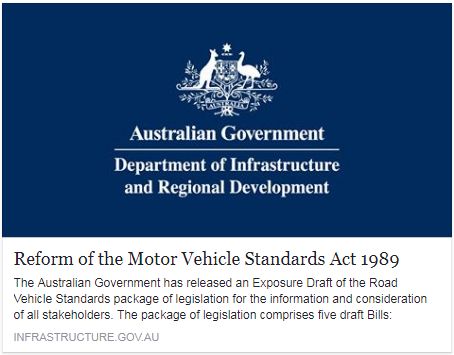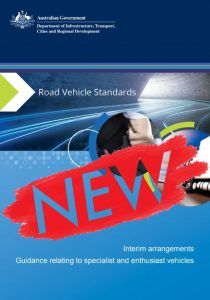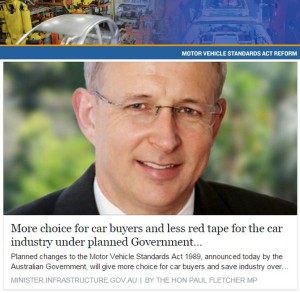
Import Regulation Changes will be delayed at least a further 6 months to around mid-2019 according to today’s Media Release from Minister Paul Fletcher:
-
Stakeholder consultation period ending 28 Feb 2018
-
New legislation then to be passed through both houses of Parliament
-
Reforms to commence 12 months AFTER the passage of legislation as the Road Vehicle Standards Act (RVSA)
The changes themselves remain much the same as previously announced, with a quick recap below of the key points of interest.
The “Parallel import” of new cars is NOT happening.
Back in August 2017 the Govt. reneged on their plans to allow the private import of new cars in direct competition with dealers.
HOWEVER, some good news here – variants of models sold here new WILL be allowed for import (new or used) providing they are significantly different to a variant supplied new in Australia AND they meet one of the six new SEVS criteria.
Significant differences would included things such as transmission, drivetrain, turbo / super charging, and body type.
This would allow the import of many models such as the Mitsubishi Lancer EVO wagon, which have previously been excluded due to a lower powered / 2WD variant having been offered new in Australia.
Another noteworthy small change with a big impact
A vehicle need only be supplied on the international market for 3 months before becoming eligible for addition to the new SEVS. Previously this was 18 months.
Among other models which took some time to be first released in Australia, this should allow import of the first year or two of R35 GTR’s.
A new “rolling” 25 Year Rule will allow unrestricted import of passenger vehicles, light commercials and motorcycles that are at least 25 years old.
Age would be evaluated based on the month of manufacture (at the time of vehicle import approval application) as per the current 1988 and older rule.
Additional changes affecting the import of vehicles newer than 25 years (under a modified SEVS)
-
No compliance limits for Registered Automotive Workshops (RAWs)
-
Standardised model reports will make compliance cheaper and easier (and more available for rare vehicles)
-
Catalytic converters and tyres will no longer require replacement
-
Compliance plates will not be used
-
A new Register of Approved Vehicles (RAV) will be set up by the Govt. and controlled by the National Exchange of Vehicle and Driver Information Services (NEVDIS) – this is an online, publicly searchable database of approved vehicles (via the VIN)
-
Once a vehicle is complied by a RAW, independent third-party inspection will be undertaken by an Authorised Vehicle Verifier (AVV) – to prevent conflict of interest an AVV cannot be associated with a RAW
-
Increased Govt. monitoring and investigation powers, plus new enforcement tools including infringement notices, civil penalties and enforceable undertakings









